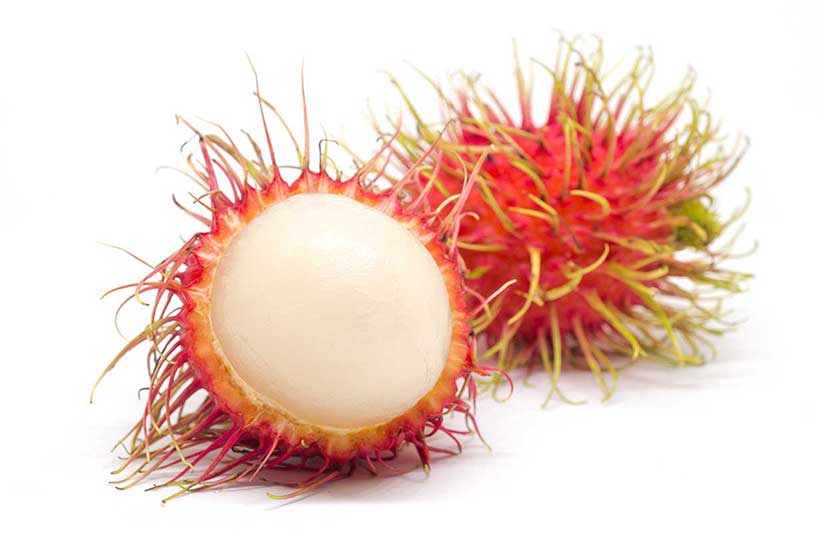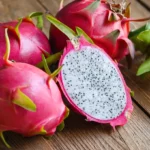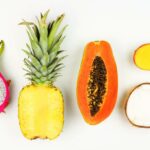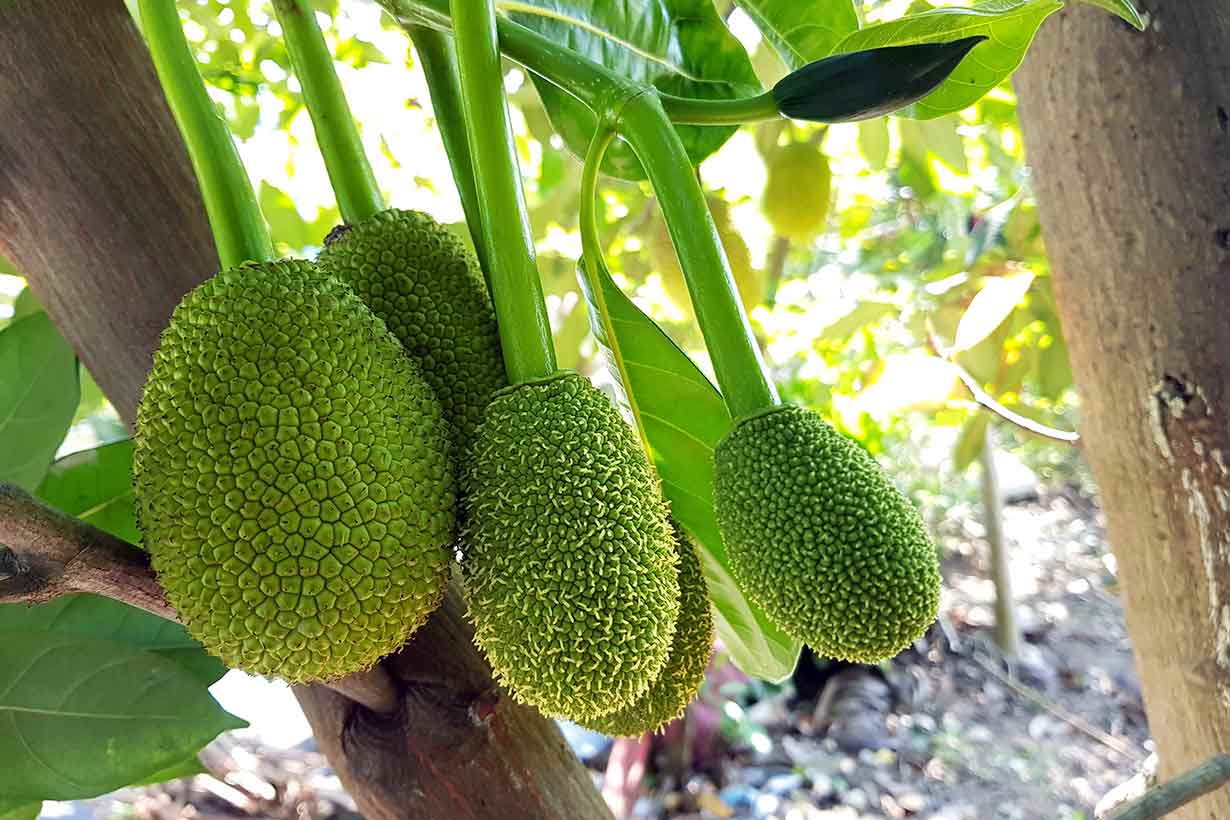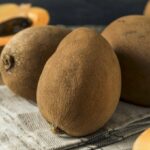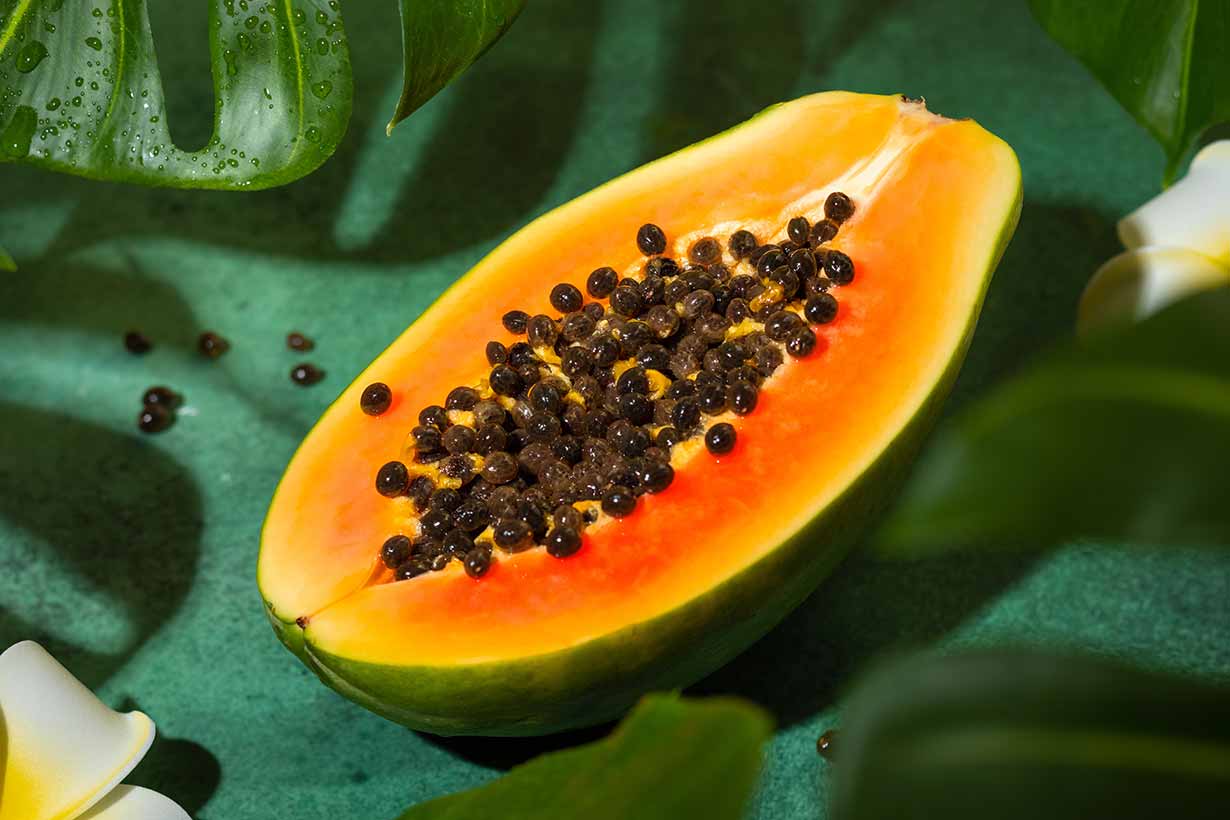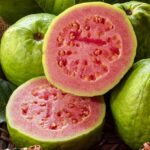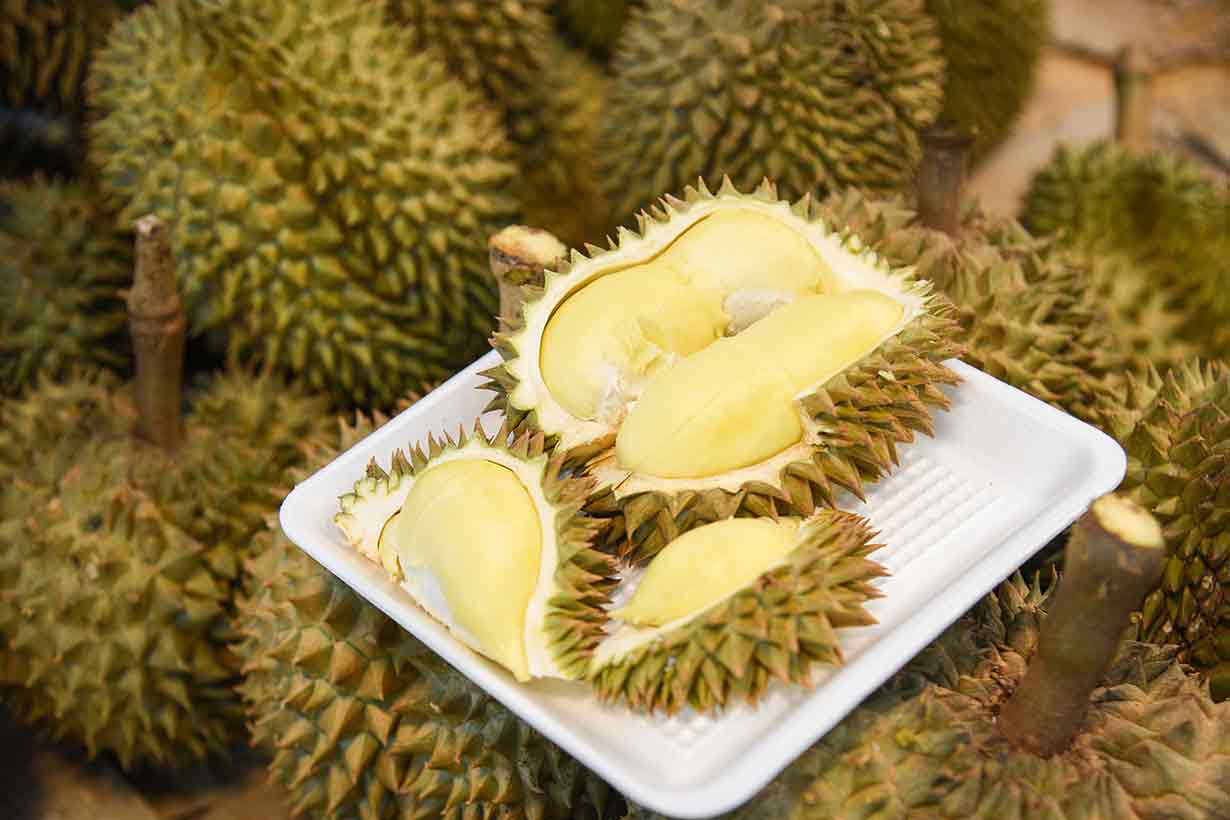Longan fruit (Dimocarpus Longan) is a small and white-fleshed tropical fruit.
This fruit is from the soapberry family, which also includes fruits such as lychee and rambutan.
In this article, we examine the nutrition profile, health benefits, and potential drawbacks of longan fruit.
What Is Longan Fruit?
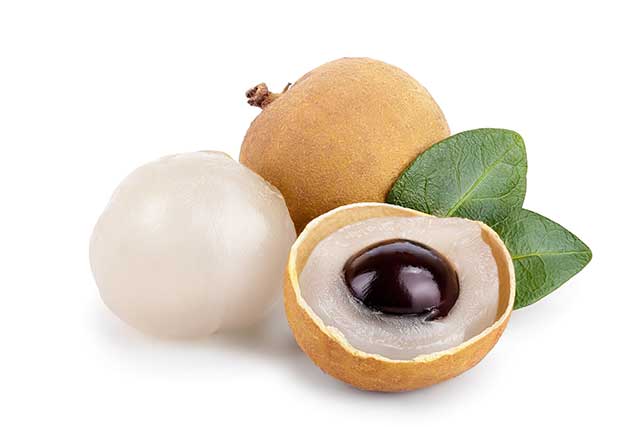
Longan is a tropical fruit that grows in China and South-East Asia, and it is prevalent in countries such as Taiwan, Thailand, and Vietnam.
Interestingly, the fruit has a nickname of ‘Dragon eye fruit,’ which may make sense when you see the above image.
As shown, longan fruit is around the size of a golf ball, and it has a translucent white flesh with a large black seed in the middle. Hence the name ‘dragon eye fruit’.
A light brown peel surrounds the flesh of the fruit.
Longan fruit grows on the longan tree, which can grow to a height of 31 meters tall.
Each piece of fruit weighs between approximately six and nineteen grams, and “desirable” longan fruit should have a diameter of 32mm or larger (1).
Taste
Like all fruit (and foods in general) longan has its own unique flavor.
The fruit is sweet, juicy, and very fragrant.
Since they have a water content of 82.75%, longan fruits are one of the more hydrating fruit options too (2).
Longan Fruit Nutrition Facts
Here are the full nutritional values per 100 grams (3.5 oz) of longan fruit.
The source of the nutrition data is the USDA National Nutrient Database (2);
| Calories/Nutrient | Amount |
|---|---|
| Calories | 60 kcal |
| Carbohydrate | 15.14 g |
| Fiber | 1.10 g |
| Fat | 0.10 g |
| Protein | 1.31 g |
| Vitamin | Amount | % DV |
|---|---|---|
| Vitamin C | 84.0 mg | 140 % |
| Riboflavin (B2) | 0.14 g | 8.2 % |
| Thiamin (B1) | 0.03 mg | 2.1 % |
| Niacin (B3) | 0.30 mg | 1.5 % |
| Mineral | Amount | % DV |
|---|---|---|
| Copper | 0.17 mg | 8.5 % |
| Potassium | 266.0 mg | 7.6 % |
| Manganese | 0.05 mg | 2.6 % |
| Magnesium | 10.0 mg | 2.5 % |
| Phosphorus | 21.0 mg | 2.1 % |
| Iron | 0.13 mg | 0.7 % |
| Zinc | 0.05 mg | 0.3 % |
| Calcium | 1.0 mg | 0.1 % |
As we can see from the nutrition profile, longan fruit is primarily a source of carbohydrate, and it is a rich source of vitamin C.
Health Benefits
Here is an overview of the potential health benefits of longan fruit.
1) An Excellent Source of Vitamin C
Longan fruit is among the best dietary sources of vitamin C, which is an essential nutrient with antioxidant properties (3).
On this note, just 100 grams of longan fruit contains 84 mg of vitamin C, which is equal to 140% of the recommended daily intake.
Maintaining adequate levels of vitamin C can help to protect the body against oxidative stress (4, 5).
2) Provides a Moderate Amount of Essential Nutrients
Aside from vitamin C, longan fruit does not contain other nutrients in high amounts.
However, longan does provide a broad range of vitamins and minerals in small to moderate amounts, such as copper, potassium, and riboflavin.
While it may not be the most nutrient-dense food in the world, longan fruit offers a reasonably good nutrient profile.
3) Longan Fruit Contains a Range of Polyphenols
Longan fruit is a source of polyphenols, which are chemical compounds thought to have beneficial health effects (6).
Among these potential benefits, researchers believe that polyphenols may have a positive impact on a range of health markers including (7);
- Blood pressure
- Lipids
- Inflammation
- Insulin resistance
That said, the majority of polyphenols in longan fruit occur in the seed and pericarp (skin/peel) of the fruit (8, 9).
Longan fruit pulp also offers a moderate range of polyphenols, including chlorogenic acid, epicatechin, and quercetin (10).
However, there is little research on the potential benefits specifically from consuming the fruit, and any effect would likely be small.
Most of the research on longan polyphenols has been undertaken on high-strength extracts from the seed and peel.
4) Longan Fruit Extracts May Have Medical Benefits
As mentioned, the majority of research on longan fruit polyphenols has focused on extracts from the fruit’s seed and skin.
Although further research is required, these extracts may have potential medical benefits.
For instance, here is some of the research to date;
- In mice studies, longan extract has demonstrated an inhibitory effect on oxidation, decreased levels of inflammation, and led to high levels of plasma antioxidants (11).
- Another mouse study demonstrated that administering longan polyphenol extracts to mice led to memory improvements over 14 days (12).
- Cell studies show that longan fruit extract exhibits free-radical scavenging activity (13).
Once again, it is worth noting that these effects are from high strength extracts of longan polyphenols.
In other words; they are not benefits we can gain from simply eating the fruit itself.
However, it is common to hear claims that the fruit itself offers these benefits, so this information is provided to give appropriate context.
Drawbacks
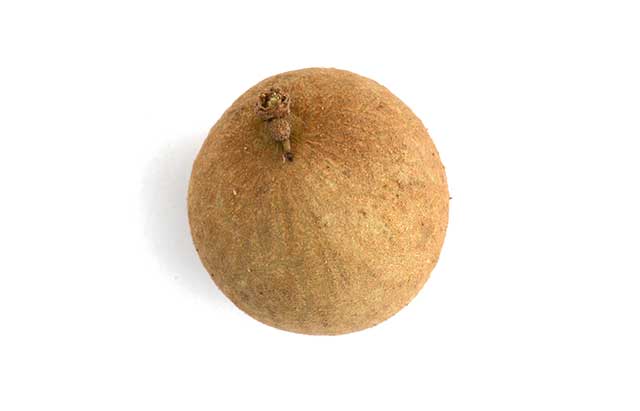
While longan fruit has several potential benefits, there are also some downsides to consider.
1) Not Particularly Nutrient-Dense
Longan fruit does contain a broad range of nutrients, but aside from vitamin C, these are only present in minimal amounts.
Other food sources of vitamin C, such as bell peppers and kale, offer similarly large amounts of vitamin C as well as many other nutrients in high concentrations.
2) High In Carbohydrate But Low In Fiber
Longan fruit does contain some fiber, but compared to other fruit, it is only a small amount.
Per 100 grams of longan fruit, there are over fifteen grams of carbohydrate, and only one gram of this is dietary fiber (2).
The table below shows the amount of total carbohydrate and fiber in longan compared to several popular types of fruit (15, 16, 17);
| Type of Fruit | Carbohydrate | Fiber |
|---|---|---|
| Apple | 13.81 g | 2.4 g |
| Longan Fruit | 15.14 g | 1.10 g |
| Orange | 11.75 g | 2.4 g |
| Raspberries | 11.94 g | 6.5 g |
One of the key benefits of fiber is that it helps to slow the digestion of carbohydrate-containing foods, thereby reducing the glycemic response (18).
To put it another way; higher amounts of fiber lower the blood-sugar response to carbohydrate-containing foods.
Compared to other varieties of fruit, longan has one of the worst ratios of carbohydrate to fiber.
For this reason, it may not be a suitable choice for those who are on lower carbohydrate diets or for anyone carefully managing their blood glucose levels.
There is currently no published glycemic index for longan fruit.
For a fiber-rich tropical fruit: see this guide to mamey sapote.
3) Dried and Canned Longan Fruit Is Very High In Sugar
Since longan fruit is native to China and South-East Asia, it can be difficult to find in the Western world.
However, dried and canned forms of longan are more widely available and hence easier to find.
While the general taste is similar, dried and canned longan fruit contains significantly more sugar than fresh longan.
Since dried longan has lost its water content, it contains a much more significant amount of sugar (and calories) per gram.
Also, canned versions of the fruit tend to come packed in syrup, which adds a lot of extra sugar.
The healthiest forms of longan fruit are either fresh or frozen.
Final Thoughts
Longan is a tasty and refreshing fruit with a unique flavor.
Although it is not particularly nutrient-dense, longan fruit offers an excellent source of vitamin C.
Overall, it isn’t the most nutritious food in the world, but it is worth trying for those who enjoy different fruits.
For more on tropical fruits, see this guide to star fruit.

